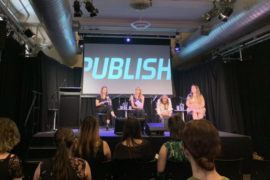The Small Press Network’s (SPN) annual Independent Publishing Conference was held at the Wheeler Centre, Melbourne, on 26–28 November. As part of the conference, the ‘Fundamentals’ program on Saturday is intended to offer ‘very practical information sessions and workshops aimed at those just starting out in publishing or as a refresher for those with more experience’. Here, the SPN general manager Tim Coronel gives a break down of some of the day’s sessions. ‘We are always working on finding ways to make your books more visible and widely available,’ says Coronel.
The day began with RMIT University’s Tracy O’Shaughnessy offering a comprehensive ‘what has to happen when’ publishing timeline, demystifying all the interrelated steps that go into publishing every book. Susannah Bowen, the head of marketing (higher education) for Cengage Australia, gave many insights into how to write a marketing plan, which followed on nicely from the Friday night launch of How to Market Books 6e, which she co-wrote. Alex Adsett’s always-popular session on contracts and rights was expanded this year to include details on royalties, and the differing clauses and rates that can apply in different circumstances.
In the first of the day’s parallel sessions, attendees had to choose between a panel session with three experienced booksellers offering advice on how to run successful events and a metadata masterclass that delved deep into ONIX fields and subject categories.
Saturday’s keynote address was from international publishing consultant Malcolm Neil. Neil spoke about his knowledge of markets in India and throughout Southeast Asia and some of the trends, opportunities and challenges he has identified. His main advice was to travel and build relationships, and to work in collaboration with international colleagues rather than approaching these growing markets with a ‘colonialist mentality’.
Award-winning cover designer Sandy Cull drew gasps of appreciation from the audience as she showed off some of her favourite covers of recent years and explained the often-intricate processes behind them. In addition to stock images and fonts, Cull’s designs can incorporate found objects, her own art and photography and hand-cut type. She explained that while the industry standard is for designers to offer three alternate covers to clients, she has been known to do up to 14 different iterations before coming up with ‘the one’.
Other afternoon sessions covered some up-and-coming tech platforms such as Bookalope, an AI-based workflow tool that aims to remove much of the repetitive hack-work in getting a raw manuscript laid out for print and digital outputs; Lisa Fuller’s workshop on publishing Indigenous stories; and Patricia Genat from ALS and Rowena Beresford from Novella Distribution discussing the schools and libraries markets.

